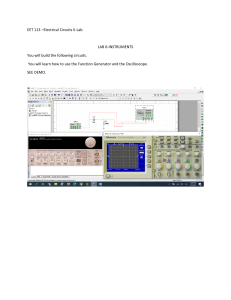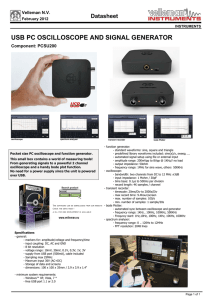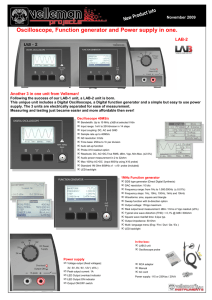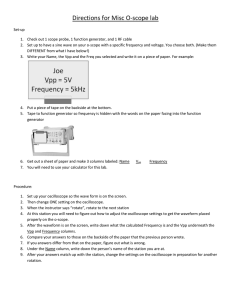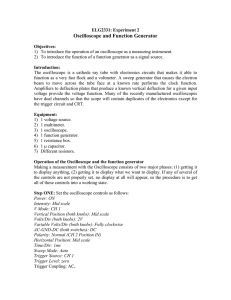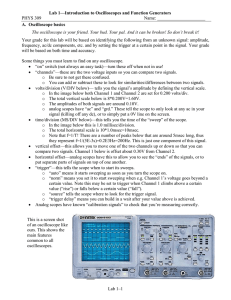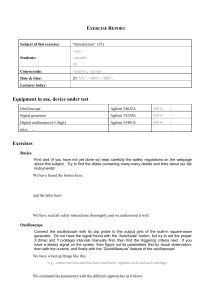Frequency response of a Twin-T notch filter - electronics
advertisement
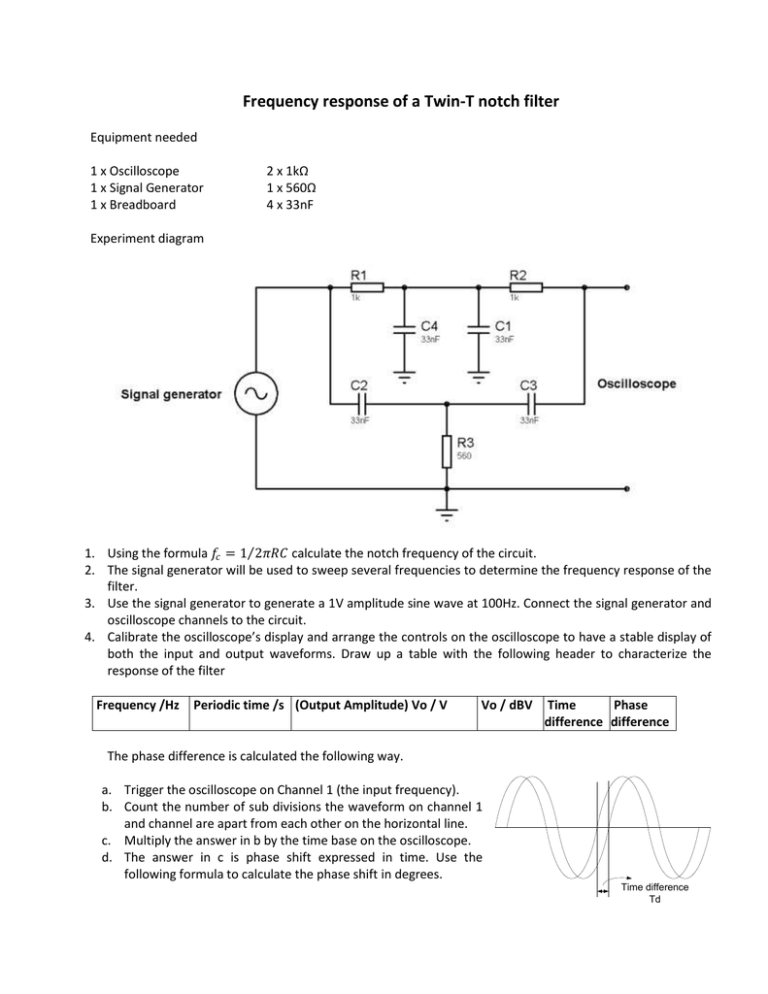
Frequency response of a Twin-T notch filter Equipment needed 1 x Oscilloscope 1 x Signal Generator 1 x Breadboard 2 x 1kΩ 1 x 560Ω 4 x 33nF Experiment diagram 1. Using the formula 𝑓𝑐 = 1 2𝜋𝑅𝐶 calculate the notch frequency of the circuit. 2. The signal generator will be used to sweep several frequencies to determine the frequency response of the filter. 3. Use the signal generator to generate a 1V amplitude sine wave at 100Hz. Connect the signal generator and oscilloscope channels to the circuit. 4. Calibrate the oscilloscope’s display and arrange the controls on the oscilloscope to have a stable display of both the input and output waveforms. Draw up a table with the following header to characterize the response of the filter Frequency /Hz Periodic time /s (Output Amplitude) Vo / V Vo / dBV Time Phase difference difference The phase difference is calculated the following way. a. Trigger the oscilloscope on Channel 1 (the input frequency). b. Count the number of sub divisions the waveform on channel 1 and channel are apart from each other on the horizontal line. c. Multiply the answer in b by the time base on the oscilloscope. d. The answer in c is phase shift expressed in time. Use the following formula to calculate the phase shift in degrees. Time difference Td 𝐹𝑟𝑒𝑞𝑢𝑒𝑛𝑐𝑦 × (𝐴𝑛𝑠𝑤𝑒𝑟 𝑐 ) × 360° 5. Sweep the input frequency from the frequency generator according to this list 100, 500, 1000, 1500, 2000, 2500, 3000, 3500, 4000, 4200, 4500, 4800, 5000, 5200,5500,5800, 6000, 6500, 7000, 7500, 8000, 8500, 9000 and 10000Hz and record the results in the table 6. Finally on separate papers plot a graph of a. Voltage/V vs Frequency (linear-linear graph paper) b. Voltage /dBV vs frequency (linear-log graph paper) c. Phase angle vs frequency 7. Using graph 6b find the 3dB points of the notch filter. Hence compare the 3dB point obtained from the graph with the computed result and comment on how much the results are equal to each other.
